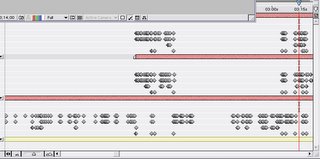Obsessively Programming
/I was buying tickets on Fandango last night for four people. They have a pulldown for how many children, adults, and seniors you would like to buy tickets for - the default is zero. I almost selected "3" thinking it meant four, because computer programs start counting at zero instead of one. That would have been really embarrassing.
"Oh, sorry guys. I accidentally bought three tickets instead of four because I counted myself as zero."
I've been obsessing over this Wiremap maybe a little too much lately. Here are the discoveries I've made for myself:
Because I come from a digital background rather than a physics or architecture background, the Y axis represents up and down, NOT forwards and backwards.
The Z axis represents forwards and backwards. And guess which one is positive? Forward is obviously positive.
This puts me at ends with the classic physics and architecture models. For example, as a grad physics student friend of mine noted, under my model, the charge of an electron is positive, and the classic "right hand rule" for physics equations all become left hand rules.
I've done lots and lots of consideration - probably a bit too much - on this point.
At any rate, I now must move on. I'm in the process of building 3d cubes and such in my Wiremap. I hope to be done in a week.




